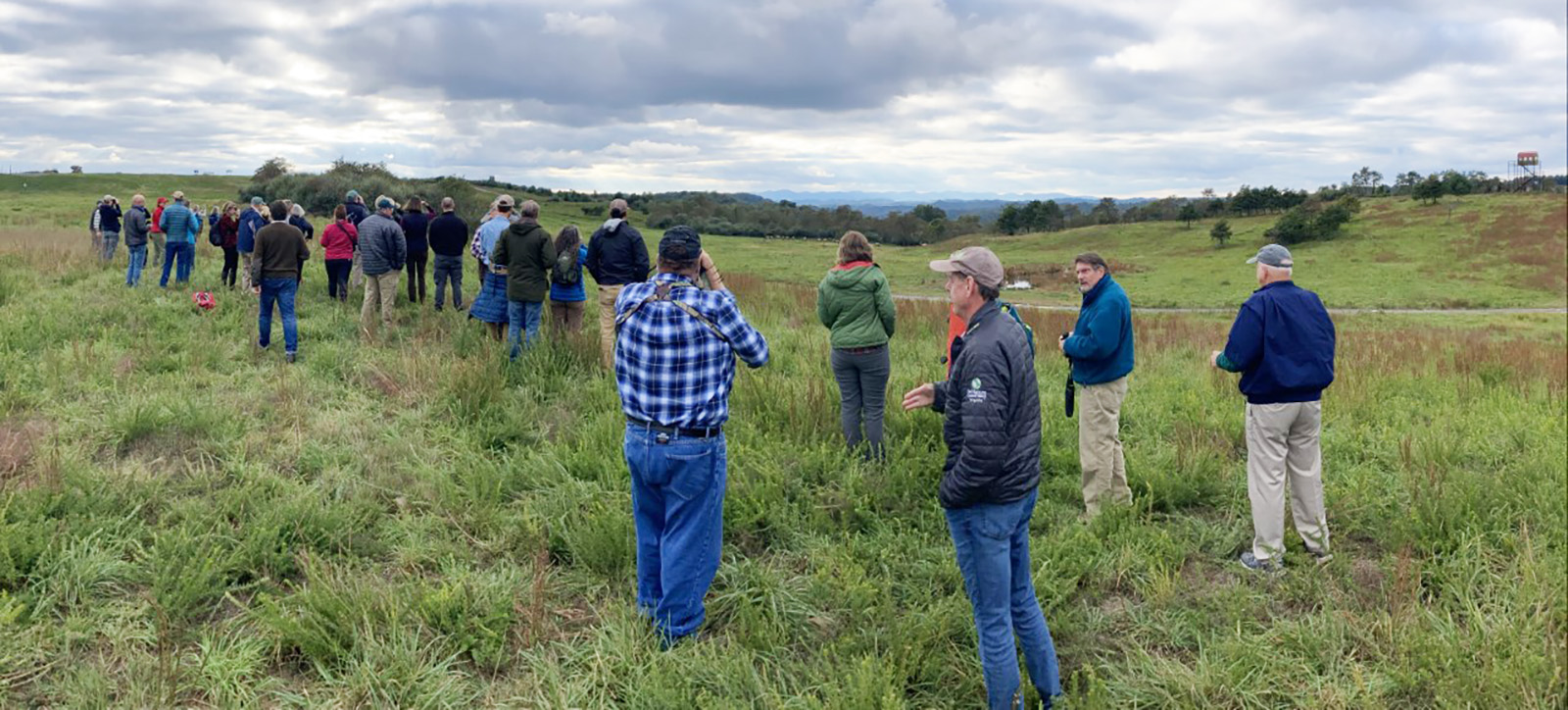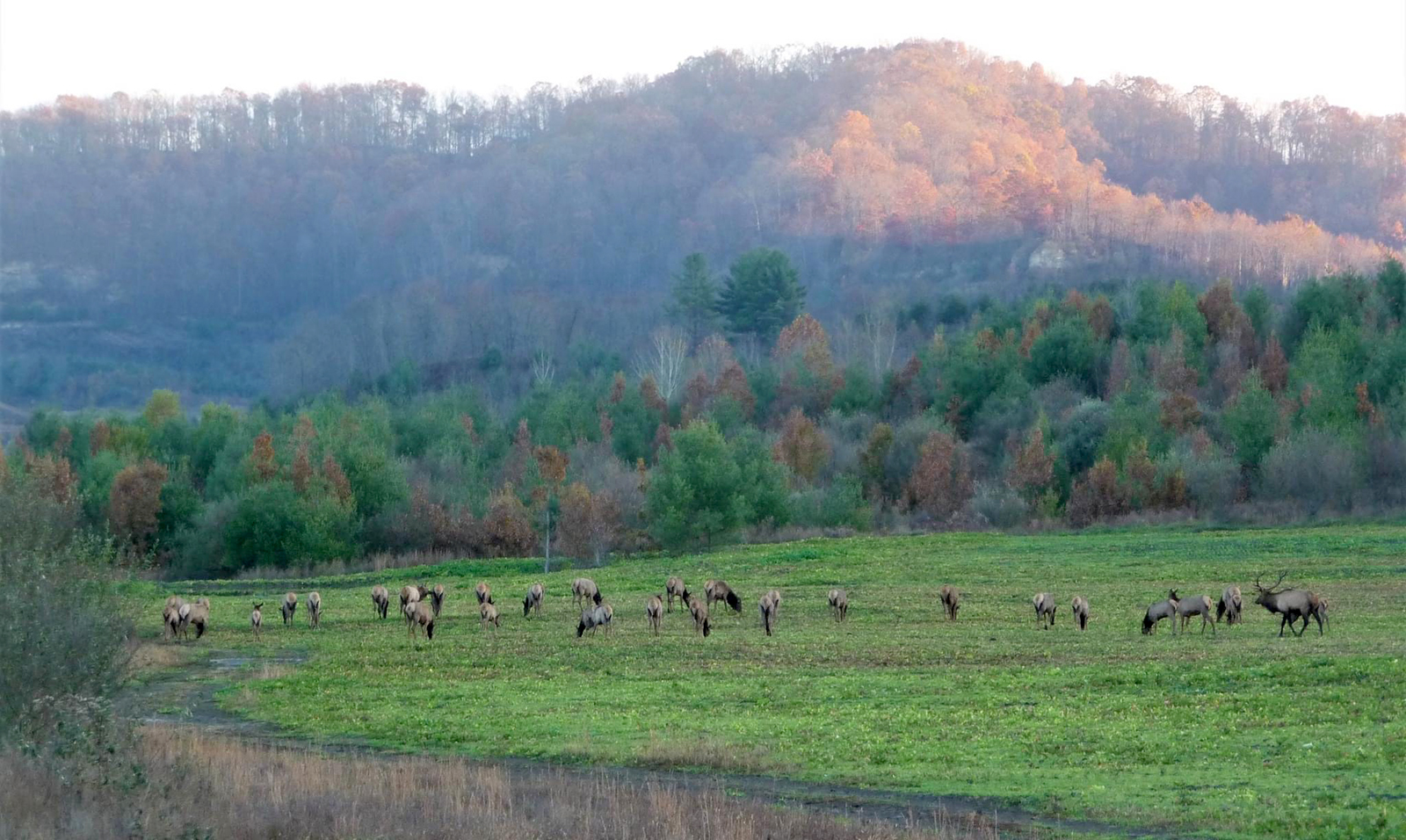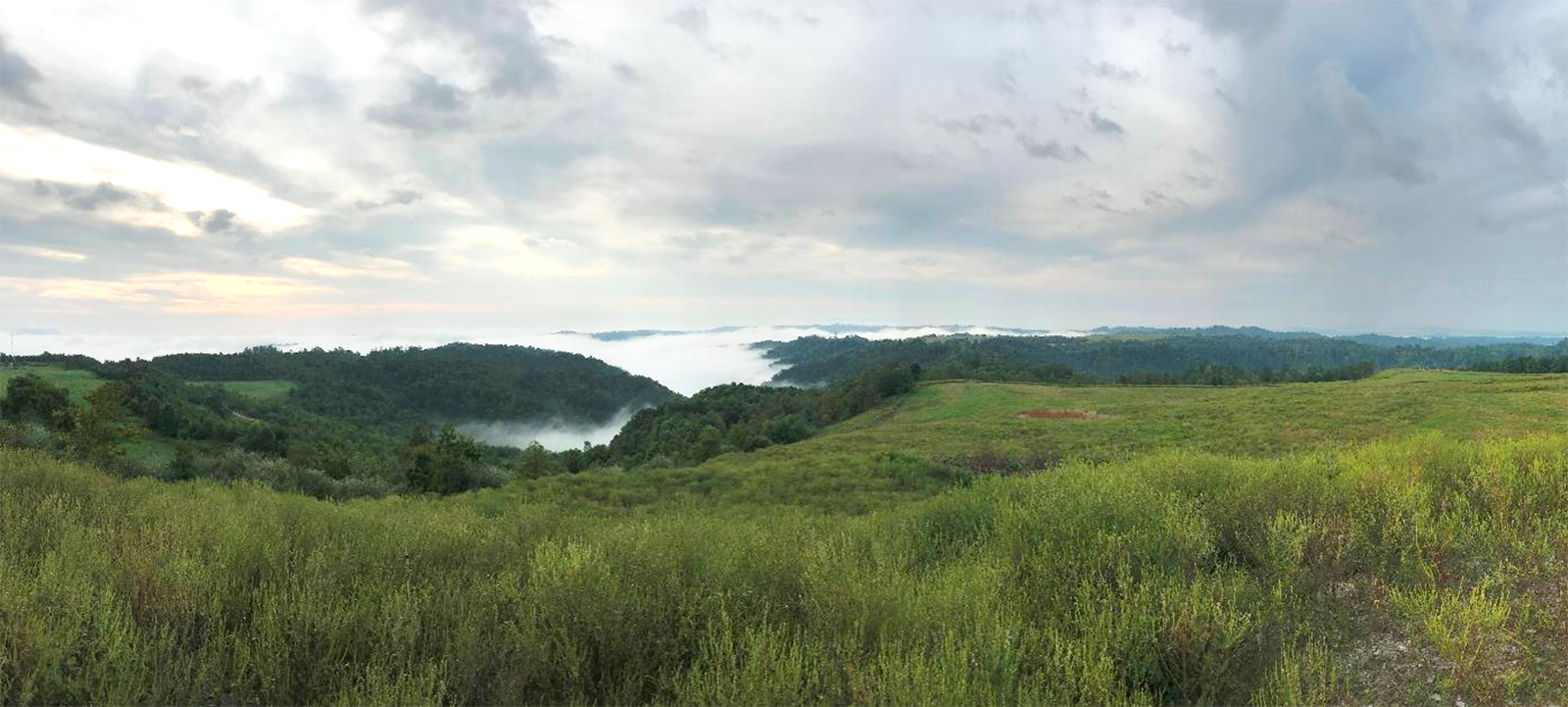By Jackie Rosenberger/DWR
Elk viewing season is kicking off and many folks will have the opportunity to experience Virginia’s elk through attending an in-person tour, visiting to the wildlife viewing shelters at Southern Gap, or watching the elk cam. The elk are very charismatic this time of year; I hope that everyone appreciates their fall beauty and boldness.

Viewing the elk has become very popular. Photo by Tom Hampton/DWR
It’s been more than a decade since elk restoration started in the commonwealth, and the population is thriving. As you marvel at these impressive animals, be sure to also pay attention to the landscape they inhabit. The land is just as special as the elk themselves and follows a very similar story.
Coal country in southwest Virginia is elk country. All of the elk habitat and viewing areas are located on reclaimed mine land. In fact, the entire Elk Management Zone (Buchanan, Dickenson, and Wise counties) has traditionally been driven by coal mining. And without mining, we would not have a place for elk to roam.

Herds of elk graze on reclaimed coal mining sites in the Elk Management Zone. Photo by Southern Gap Adventures
First, we need to cover some basics on coal mining. Coal seams are located underground, and mining companies can get to them either through deep mining (bottom-up) or surface mining (top-down). The latter includes methods such as strip mining and mountain-top removal, both of which lead to the creation of relatively flat, open land. The process involves removing everything above the coal seam in order to expose it. Once all the marketable coal has been extracted from the site, reclamation begins. As required by law, mining companies must have an approved post-mine land use in place and put up bond money before they break ground on a site. In order to receive the bond money back, they must complete the work required to achieve that approved use. To reclaim sites for wildlife, soil must be replenished and plants must be sowed. Unfortunately, invasive plant species, such as sericea lespedeza and autumn olive, were historically a top choice because of their ability to prolifically grow and reproduce.
Elk are herbivores that spend a lot of time grazing on grasses and forbs in fields and other open areas. Elk also need forested areas for food and cover. The Elk Management Zone is predominantly forested with steep topography. But surface coal mining paved the way for conversion to and maintenance of grasslands and fields for elk and other wildlife among those forested lands. Mining is the only way that open habitats could be created at such a vast scale. The Virginia Department of Wildlife Resources (DWR), together with our partners—Southwest Virginia Sportsmen, Rocky Mountain Elk Foundation, and The Nature Conservancy—have been improving habitat conditions on reclaimed mine land for elk and other wildlife through mowing, herbicide application, planting, and mechanically removing invasive plant species. This not only has benefited elk, but also many other early successional/grassland wildlife species that are on the decline throughout North America. Species such as eastern meadowlark, northern harrier, woodcock, and eastern box turtle are observed on the areas managed for elk.
There is nothing about the field-forest mosaic that is unnatural. The pre-colonial landscape in what is now the eastern United States was drastically different from the large expanses of mature forest we see today. Woodlands, savannas, meadows, and prairies were extensive and supported significant numbers of elk and bison, both of which need grasses to survive. Regular disturbance is necessary to maintain grassland and early succession so that woody plants are suppressed, thus delaying the progression towards a forested landscape. Contrary to popular belief, Native Americans in eastern North America had a significant impact on the landscape through intentional clearing of trees, burning, and creation of farmland. They set controlled fires to improve vegetation quality, open the forest, and attract animals such as bison, elk, and deer for better hunting. They also burned along trails to improve ease of travel and limit the ability of predators (both animal and human) to hide and ambush them. In addition to intentional fires, natural lightning-sparked fires accomplished the same purposes. Native grazers, like elk and bison, helped to maintain grasslands and promote grass and forb diversity. All of these things combined to make the eastern United States a much more open and diverse landscape than it is today.

Photo by Meghan Marchetti/DWR
In 2023, our landscape looks vastly different than when elk first roamed here. Development and agriculture take up a vast amount of space. The lack of native grazer wildlife, emphasis on fire suppression, and the decline in logging over the past few decades, especially on federal public lands, has combined to create broad expanses of homogenous, mature forest. Thankfully, surface coal mines in the Appalachian Plateau of Virginia have enabled grasslands and early succession to experience a regional resurgence. And the restoration of a native landscape and native megafauna have come with it.
We make it a point to highlight to our elk tour participants that they are experiencing the fruits of mine reclamation labor. We typically receive surprised and unbelieving looks because images of active mining, and not reclamation, are what most folks associate with coal mining. It is important to understand that coal mining does not destroy land beyond repair. As a wildlife biologist, I am trained to always see the potential in a property and to make the most of what is available. And with our army of volunteers, landowners, and conservation organizations, the potential for the land and elk in southwest Virginia is sky-high.
Jackie Rosenberger is the DWR Elk Project Manager.


